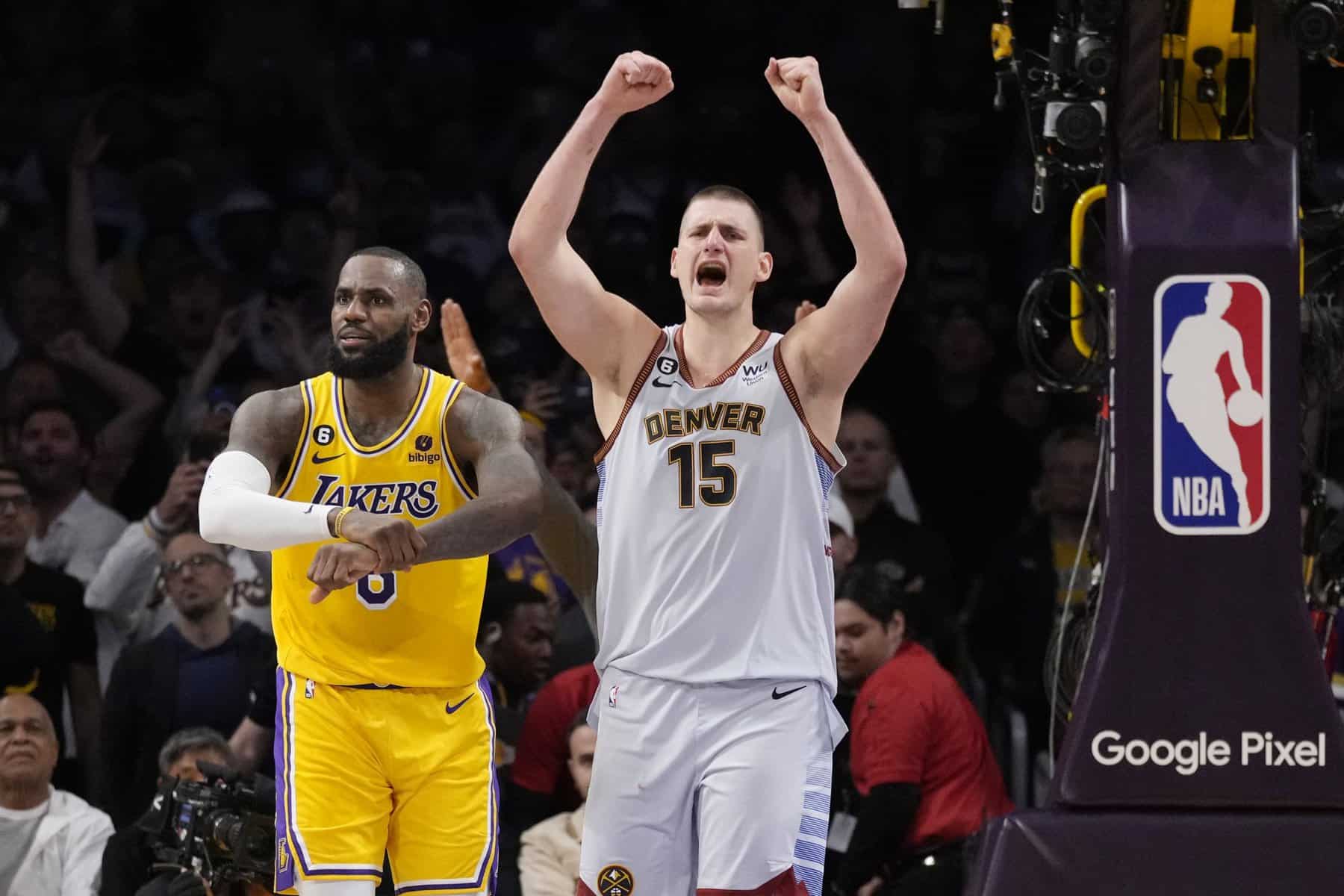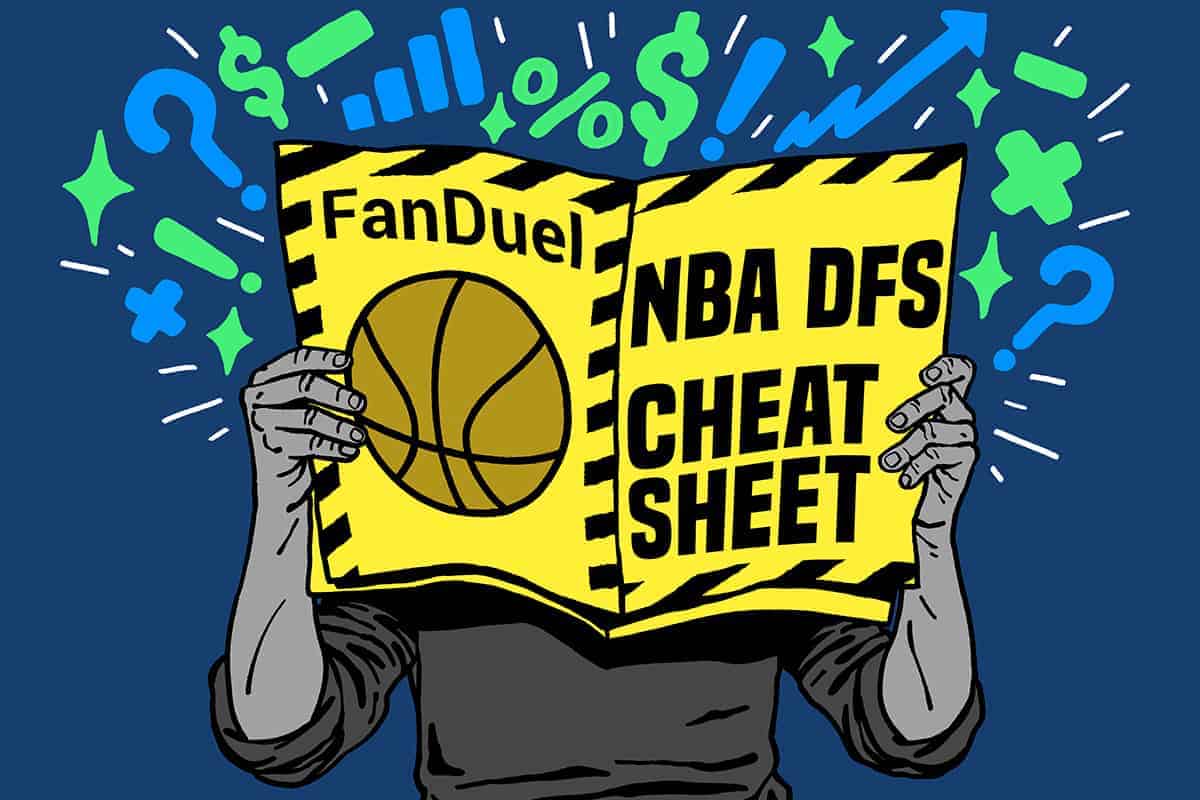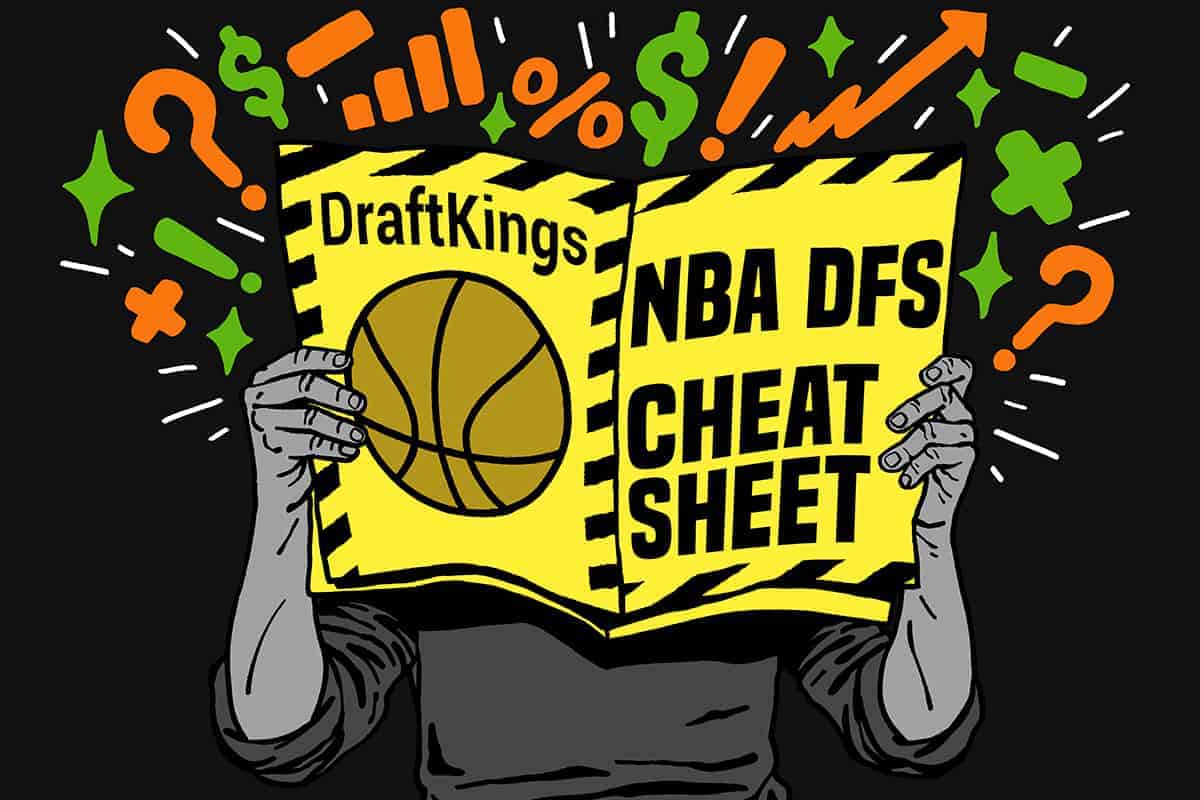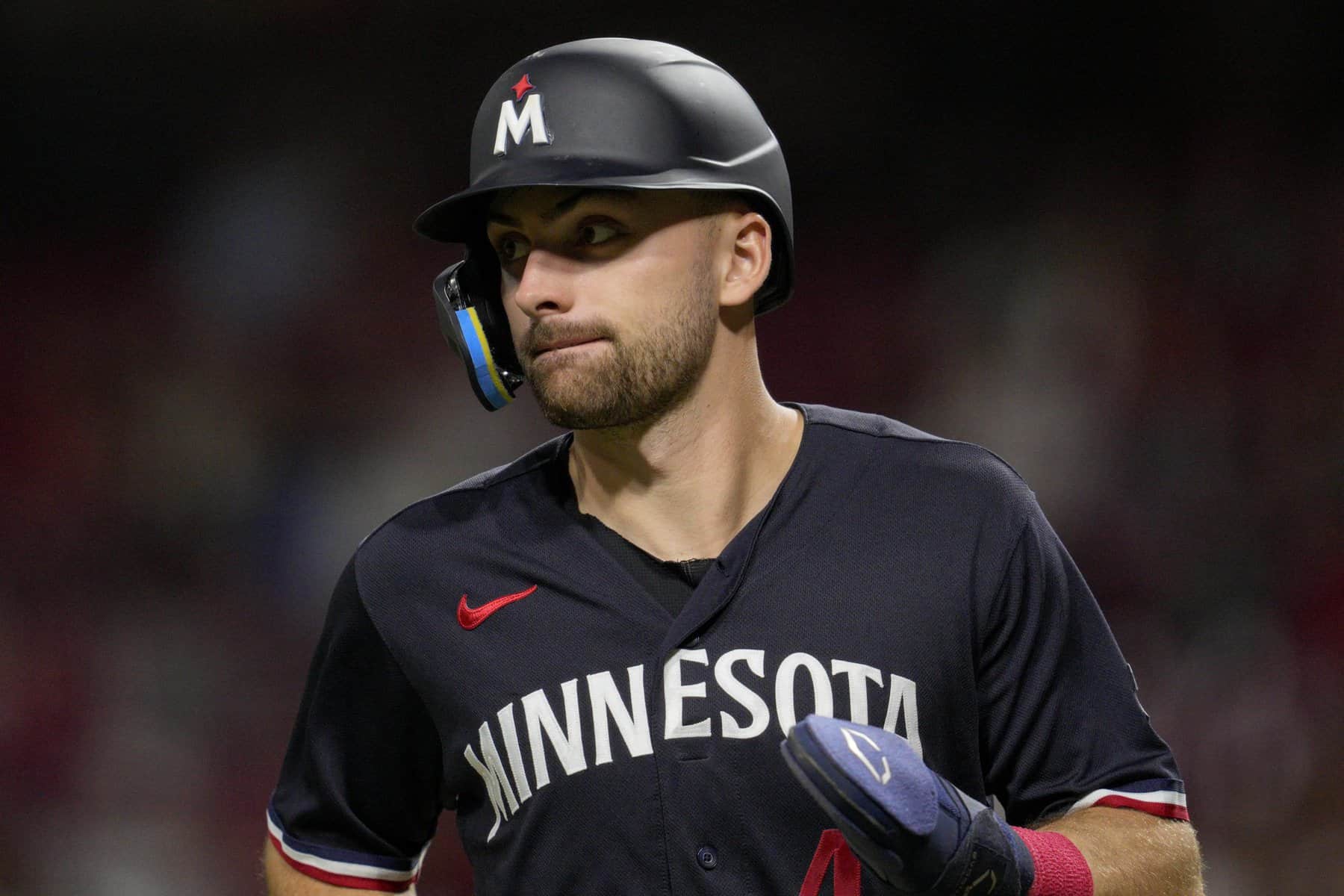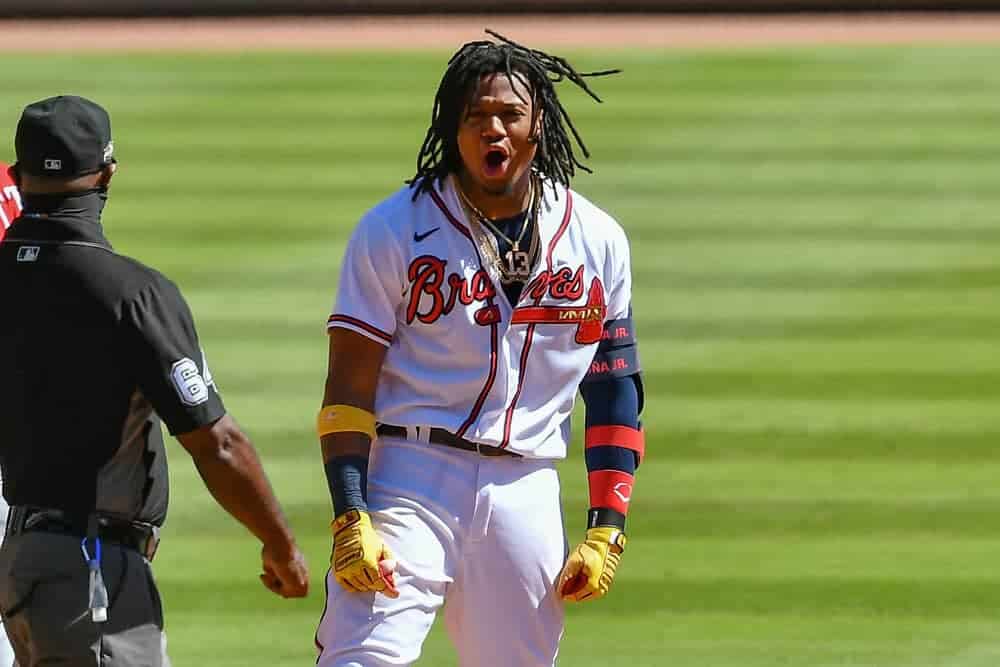For nearly a year now, I’ve been hosting the High Stakes podcast for Stokastic, interviewing DFS pros on a range of topics. There have been a lot of recurring themes on the show, but the most relevant for this article: DFS pros love NFL DFS Showdown.
That’s because a lot of casual NFL fans enter the Showdown fray as a way to have some action on island games. As a result, DraftKings and FanDuel offer enormous contests with generous prize pools. The contests become more difficult to win, too, when there are hundreds of thousands of entrants, but with a large portion of the new players being casual, the increase in difficulty pales in comparison to the increase in prize pools. It’s a tradeoff DFS pros will gladly make.
My goal with these Showdown articles — which I’ll be writing for each Thursday Night Football and Monday Night Football NFL DFS slate this season — is to help you attack the largest-field DraftKings GPP like a pro. There are three main components to discuss when it comes to Showdown, and I’ll break them down accordingly: Projection, Correlation and Differentiation.
Before reading this piece, you may find it helpful to read my evergreen piece about how to attack NFL Showdown GPPs more generally: https://www.stokastic.com/nfl/draftkings-showdown-simplified-tips-tricks-making-big-money-nfl-dfs-island-games-2022/
Week 5 NFL DFS Showdown: Colts vs. Broncos TNF
Projection
The goal in DFS is to make the lineup that puts up the most points and a natural starting point is looking at individual players who are likely to put up high scores or high point-per-dollar scores. Some pros run simulations or create their own projections to achieve this. Many others, like myself, rely on the Stokastic projections and tools to determine which players should be core pieces of our lineups. I primarily look at the base projections and the “Top Showdown Plays” Tool, which publishes results of 10,000 advanced simulations run by the Stokastic team.
Studs
These are simply the top projected players on the slate. I’d recommend having at least three of these players in just about every lineup you make tonight, either as captain or in a flex spot.
- Russell Wilson ($10,400) has the highest projection on the slate at the second-highest salary.
- Courtland Sutton ($9,400) has the second-highest projection at the fourth-highest salary.
- Matt Ryan ($9,600) has the third-highest projection at the third-highest salary.
- Michael Pittman ($10,600) has the fourth-highest projection at the second-highest salary.
- Nyheim Hines ($6,800) should benefit from Jonathan Taylor‘s absence and is the fifth-highest-projected player at a nice price discount.
- Melvin Gordon III ($8,800) becomes the top running back for the Broncos with Javonte Williams out.
- Jerry Jeudy ($7,800) has the seventh-highest projection on the slate.
Point-Per-Dollar Plays
These are just a few players who will be featured throughout my lineups due to their high projected points per dollar. At the same time, because I’ll typically have at least three studs in each lineup, the top points-per-dollar plays are often players I’ll be pivoting away from in some spots in favor of players who project a bit worse but will also garner lower ownership. I’m also excluding any player with a projection below three fantasy points from this list.
- Phillip Lindsay ($400) has been elevated from the Colts’ practice squad for this game to face his former team. It is unclear how the running back work will break down with Taylor out, but Lindsay projects well for his price tag.
- Kendall Hinton ($1,000) was active for 57% of Broncos snaps in Week 4 and was targeted three times. As noted by Justin Freeman of Run the Sims, he is no longer eligible to be called up as a practice squad player, so he will need to be signed to the active Broncos roster to be able to play. Something to keep an eye on.
- Eric Saubert ($1,200) played 77% of snaps for the Broncos in Week 4, leading a crowded group of tight ends. He has been targeted just six times through four games but is a red zone threat.
- Deon Jackson ($1,600) joins Hines and Lindsay in a muddled Colts backfield. He could see extended run with Taylor out and could pay off his price tag with a single splash play.
- As is often the case, kickers and defenses — Chase McLaughlin ($3,800), Brandon McManus ($4,000), Broncos ($4,200), Colts ($3,400) — make for solid value option.
Correlation
In NFL DFS, correlations are endless, both positive and negative. Some are obvious — QBs have positive correlation with the WRs on their team. Some need a bit more research — how do kickers fare when a team’s backup running back exceeds his projection? Some correlations I like in this game:
- Wilson at captain with at least one Broncos pass catcher in a flex spot. More often than not, if Wilson is the optimal captain, at least two Broncos pass catchers will be in flex spots. This is because pass catchers score more fantasy points on each passing play than the quarterback, so if too much of Wilson’s volume is to one pass catcher, that pass catcher will likely become optimal. Wilson does just enough with his legs that he could be optimal at captain with just one pass catcher in the flex, if he has a spike rushing week.
- Matt Ryan at captain with at least two Colts pass catchers. Ryan did not rush for more than 100 yards in either of his last two seasons and has just 9 yards rushing through four games this season. He is unlikely to be the optimal captain unless he spreads the ball around to multiple pass catchers.
- Matt Ryan at flex with at least one Colts pass catcher in the lineup, either at flex or in the captain spot.
Note: This section is about correlations, not player suggestions. These are recommendations for correlations if you have either QB in your captain spot, not necessarily suggestions that they’re the first place you should go.
Differentiation
Making highly projected lineups with smart correlations will separate you from the lowest level Showdown players, but there are many very smart casual players as well. Differentiation is the last step to separating pros from Joes.
In just about any DFS GPP, finding low-owned gems is key because lower ownership reduces the field of lineups you’re competing against when the player has a 99th-percentile outcome. Taking it to the extreme, just as a thought exercise, let’s say that Gordon scores 100 fantasy points tonight. You’re not just going to need him; you’ll need him in the captain spot (150 fantasy points). If 20,000 lineups in your contest have Gordon in the captain spot, you’ve essentially reduced the field of lineups you’re competing with to 20,000. If only 200 lineups have Gordon at captain? Now we’re talking.
On NFL Showdown slates there is an additional factor for large-field GPPs. We don’t just want to find seldomly used players; we want to find seldomly used LINEUPS. Why? Well, I’ll give you two examples from last year:
- On Sept. 20, 2021, DraftKings had a Milly Maker for the Packers vs. Lions tilt, but the top lineup was duplicated 231 times. Rather than winning a million dollars, the users who entered those 231 lineups had to split the top 231 prizes, for just a bit over $6,000 each. That’s despite having everything go their way, which requires an extreme amount of luck.
- On Oct. 11, 2021, we saw the other end of the spectrum: user rcoho1984 played a unique lineup in the Ravens vs. Colts Milly Maker, taking home not just a million dollars but a ticket to the Tournament of Champions.
If you’re going to win — which takes a lot of luck, regardless of how well your lineup projects — I’d suggest making it count. I’m not necessarily concerned with making an entirely unique lineup like rcoho1984 did every single time, but I aim to be a lot closer to their unique lineup than those that were duplicated 231 times.
Some Easy Tricks
Low-owned players. Yup, even if you’re using other tricks to get unique, it’s still a good idea to play a few players who won’t be getting much ownership. Some low-owned players to consider:
- Parris Campbell ($3,600) leads the Colts in routes run through four weeks but has been targeted just 11 times. Campbell should put up some spike weeks, and at this low salary and relatively low projected ownership, this is a great opportunity to target him.
- Kylen Granson ($3,200) has run 77 routes and been targeted 14 times through four weeks.
- Mo Alie-Cox ($4,800) has run 87 routes and been targeted 13 times.
- Mike Boone ($6,200) and Latavius Murray ($5,200) should see increased opportunities with Williams out, and we don’t yet know the backfield breakdown. Neither is great from a point-per-dollar standpoint, but both should have some role in this game at low ownership.
- Ashton Dulin ($4,600) played 29% of Colts snaps in Week 4 and has been targeted 15 times on 59 routes run this season. He is interesting at single digit projected ownership.
- K.J. Hamler ($4,400) was an afterthought in Week 4, playing just eight percent of Broncos snaps. He is in play as a splash play threat and would benefit if the Broncos do not sign Hinton to the active roster.
- Albert Okwuegbunam ($2,800) played just one snap in Week 4, fourth among Broncos tight ends behind Saubert, Andrew Beck ($200) and Eric Tomlinson ($200). Now rookie tight end Greg Dulcich ($200) is eligible to be activated off injured reserve. It would be unsurprising if Okwuegbunam doesn’t see a single snap this week. Still, Okwuegbunam is somewhat interesting due to his low ownership. Week 4 could have just been an outlier, and Okwuegbunam has shown some talent as a pass catcher in the past. As the primary backup last year, Okwuegbunam caught 33 of his 40 targets for 330 yards and two touchdowns. Dulcich would also be in play if he is activated, particularly if another Broncos tight end shows up on the inactive list.
Embrace lineups missing some correlation pieces or even with some negative correlation. Generally, highly correlated lineups will be over-owned, whereas the field will avoid negative correlation at all costs. If you want to read my reasoning, check out the evergreen piece I linked near the top of this page. In some of my lineups, I like to see the following:
- Quarterback against opposing Defense.
- Pass Catcher at Captain without including the QB at Flex.
- Multiple Running Backs from the same team in a lineup.
Latest NFL DFS Content
- Want to Learn How to Win a DraftKings Milly Maker With Stokastic Sims? Steve Buzzard Will Tell You How
- PrizePicks, Sleeper & Underdog Cheat Sheet: Best More/Less Picks Today for NFL (February 11)
- DraftKings NFL Cheat Sheet: Super Bowl Sims Picks | George Kittle
- NFL Super Bowl 58 DFS Picks: 49ers vs. Chiefs (February 11)
- NFL DFS Captain Picks for Super Bowl 58: Rashee Rice, George Kittle & More
- Stokastic DFS on Youtube
Leave salary on the table. This is the easiest way to lower your duplicates. Casual players assume that if they have salary left over, they should upgrade. The problem with this approach is that it almost inevitably leads to highly duplicated lineups. How much salary should you leave on the table? That’s up to you. If it’s less than $600 and you haven’t gotten extremely unique with player selections and weird correlations, it’s likely you’ll have to split any winnings with many other entries.
Thanks for reading to the end of this article! If you appreciate this free content and want to see more of it every day, you can help us out by sharing this article on social media!
[NFLPAGE]

